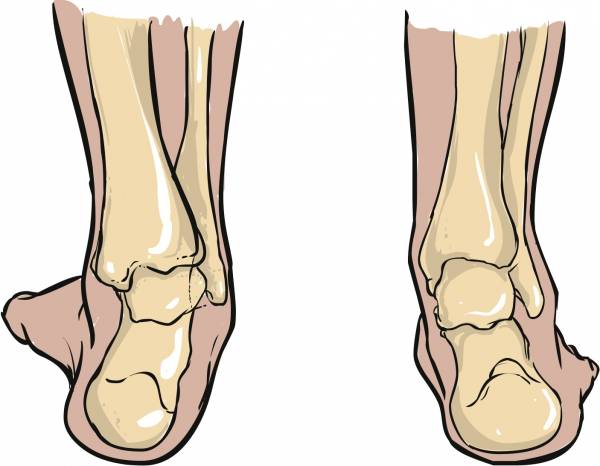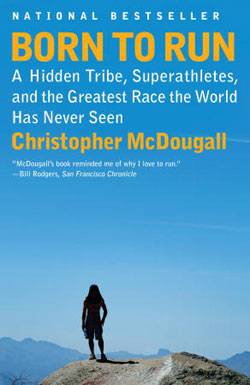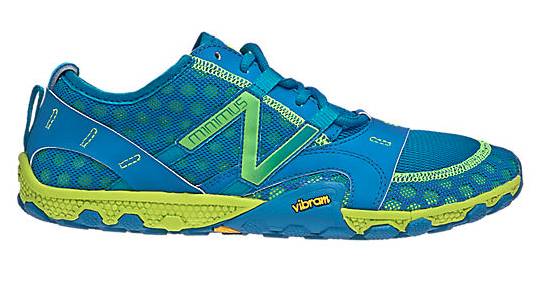Running is a simple sport. Left foot, right foot, repeat. The only specific sport equipment you’ll need to run properly is a good pair of running shoes.
Do You Really Need Running Shoes?
You can “technically” run in basketball shoes, in stilettos, or even barefoot. But if you take your running (and your health) seriously, you should invest in a pair of shoes meant for the running gait and the specific biomechanics of a runner. There are also some other aspects, such as grip and protection. A tennis shoe is meant for sliding over clay or grass, not to propel you forward for miles, going from pavement to grass to the occasional puddle. The most important design elements of a running shoe, though, are the ones relative to promoting a correct gait and helping you absorb some of the impact with the ground, which is what eventually leads to joint overuse and injury.
Do You Need to Spend a Lot of Money?
In all honesty, no. Top-shelf running shoes start at $100 and go all the way to $200. They are indeed better than the cheaper alternatives, being lighter in weight and using premium materials that last longer and protect you better. But you can find (very easily online) last year’s version of a top of the range shoe and pay half price for them. If you are interested, for example, in the Nike Pegasus 30, look for reviews of the Nike Pegasus 29. More often than not, the differences won’t be that many and you will have a premium running shoe for a fraction of the price.
The Most Important Things When Shopping for Running Shoes
Let’s start from the most essential aspect of a pair of running shoes – fit. There is nothing worse than running in a shoe that is too small (no, they won’t “give in and feel better”), too big, too narrow, or with a heel that rubs and blisters you. Take the time to try both shoes on, and if possible, have a little run in the shop or on a treadmill.
Here are some more suggestions about finding the right fit:
- Make sure the heel is not slipping. The shoe should not be small, but if your heel keeps slipping out, you need to revisit your lacing or choose a different shoe.
- When checking for the size, wear the same kind of socks you will be using for running and leave half a centimeter or space between your big toe and the end of the shoe. Feet swell during exercise and a shoe that is “just right” in the shop, will most likely feel too small during a run.
- Laces should be tight so that the shoe doesn’t move around, but not so tight that you cut off circulation.
- Make sure the breathability of the shoe you choose that matches the weather you are planning to run in. Open mesh helps you cool your feet especially in hot climates, but you wouldn’t want it if you run on cold winter mornings.
The Traditional Running Shoes Categories
 For the past two decades, runners have been split into different categories depending on their pronation, which is how much your arch collapses during the running gait. The collapsing of the arch (pronation) is your body’s natural way of absorbing the shock of the impact with the ground. Pronation is good, but sometimes runners pronate too much, meaning they have a flat arch and the foot rolls inward excessively while running. Sometimes they don’t pronate enough, with an arch that does not collapse at all.
For the past two decades, runners have been split into different categories depending on their pronation, which is how much your arch collapses during the running gait. The collapsing of the arch (pronation) is your body’s natural way of absorbing the shock of the impact with the ground. Pronation is good, but sometimes runners pronate too much, meaning they have a flat arch and the foot rolls inward excessively while running. Sometimes they don’t pronate enough, with an arch that does not collapse at all.
Traditional running shoe categories include cushioning (or neutral) and stability (or support):
Cushioning running shoes are for runners who don’t pronate enough (under pronators). These shoes have softer materials in the midsole (be it air, or gel, or a softer EVA foam) to help the runner absorb the shock. They are the most common running shoes and the most popular models are the Nike Pegasus, the Asics Nimbus, and the Brooks Glycerin.
Stability running shoes are for the runner who pronates excessively, with an arch that collapses almost entirely. Stability shoes are meant to provide the foot with support that helps the runner’s foot keep to the ideal gait line. Most stability shoes use a feature called dual density foam, which is visible by a darker insert of foam (usually grey) in the medial – or internal – side of the sole of the shoe. This harder foam compound is placed right under the ankle and prevents it to collapse. Popular stability running shoes are the Mizuno Inspire, Brooks Ravenna, and New Balance 860.
Going Minimal: A New Current of Thought
 Over the past five years, sparked by the hugely popular book Born to Run, by Christopher McDougall, people have started questioning the validity of the cushioning and stability dichotomy. The idea is that shoes that correct your pronation problems might be making the problem worse. A good running shoe should not influence your running at all, but let you free to pronate in your natural way and avoid injury through better form, not better footwear.
Over the past five years, sparked by the hugely popular book Born to Run, by Christopher McDougall, people have started questioning the validity of the cushioning and stability dichotomy. The idea is that shoes that correct your pronation problems might be making the problem worse. A good running shoe should not influence your running at all, but let you free to pronate in your natural way and avoid injury through better form, not better footwear.
This idea caught on quickly with the running community – minimalist running shoes were born. These shoes are extremely lightweight and have little or no cushioning or stability features. They usually have 0mm drop between the heel and the toe (industry standard is 12mm) and their shape resembles the shape of a bare foot. Popular minimalist running shoes are the New Balance Minimus, the Skechers GoRun, and the Saucony Virrata.
The running world is split between traditional runners and minimalist ones. So far, no study has been able to prove either group right or wrong. You should try them both and decide for yourself. One thing everybody seems to agree is that minimalist running shoes are very tough on your body, especially in the beginning, and running in them should be gradual.
Short Version: How to Choose the Right Shoes for You
 First of all, make sure you are looking at running shoes. Select a cushioning pair if you have high arches or a stability one if you have low to flat arches. You might even stop caring about the height of your arches and go minimal, buying a running shoe that is as bare as possible. Be cautious though, and listen to your body or injury could be around the corner. Once you’ve decided what kind of running shoe you want, try them on. Make sure both shoes fit perfectly and don’t hurt anywhere, even when tied snugly.
First of all, make sure you are looking at running shoes. Select a cushioning pair if you have high arches or a stability one if you have low to flat arches. You might even stop caring about the height of your arches and go minimal, buying a running shoe that is as bare as possible. Be cautious though, and listen to your body or injury could be around the corner. Once you’ve decided what kind of running shoe you want, try them on. Make sure both shoes fit perfectly and don’t hurt anywhere, even when tied snugly.
Some people are brand loyal some others enjoy trying a new running shoe every few months. Running shoes are designed to last approximately 400 miles. With a weekly mileage of twenty miles (plenty for a beginner) you can expect to get five to six months of running out of your running shoes. Not a bad return on investment!
Photo 2 courtesy of Shutterstock.






